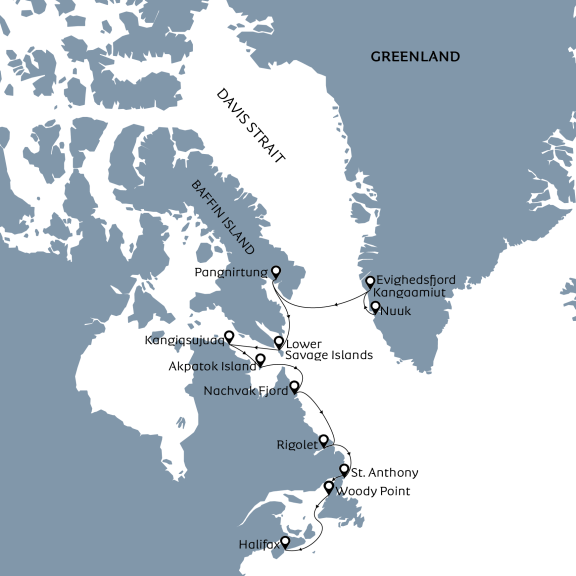Autumn Northern Lights - from Greenland to Nova Scotia
Next DepartureSep. 14, 2026See all departures |
Duration15 daysSee the itinerary |
Activities
, Lectures, Northern Light, Zodiac |
From Greenland to Nova Scotia, sail beneath the northern lights in the wake of legendary Norse explorers, and discover the best of Greenland and the Canadian Maritimes.
Embark Ocean Albatros for an adventure like no other, following the course of the great Norse explorers of old, sailing beneath the dancing northern lights. Sail from Nuuk, former site of the Norse Western Settlement to the wilds of Baffin Island, the rugged coast of Nunavik, the mountains of Labrador and the forests of Newfoundland, all in one remarkable voyage.
According to the Sagas, one thousand years ago, Leif Erikson, son of legendary Viking explorer Eric the Red, set out from his home in Greenland to follow rumours of a land to the west. He and his crew set out into the unknown and arrived first at the stony shores of a country they named Helluland. Historians believe this place (meaning Flat-Rock Land in Old Norse) was probably the cold and rocky shores of Baffin Island. From here, Leif sailed south, finding a shore lined with trees, which he named Markland - the Land of Forests - which historians believe is the coast of Labrador. Two days to sailing to the south, he found a hospitable land of thick forests, with rivers full of salmon, and vines covered in wild grapes, which he named Vinland - modern-day Newfoundland. From here, Leif returned to Greenland, forever altering the course of history, and becoming the first European to visit North America, 500 years before Columbus.
Throughout this legendary route, we will keep watch for the highlight of the Arctic Autumn - the return of the northern lights. The midnight sun gives way to lingering sunsets and clear nights, as the long Arctic winter returns to the North. Sailing from the multicoloured towns and breathtaking fjords and glacier of Greenland, we will visit Inuit communties in Baffin Island and Quebec, before following the coast of the Canadian Maritimes to the vibrant city of Halifax. Welcoming Inuit culture, Arctic wildlife sightings, historical marvels and wonders of natural history are just a few of the highlights we hope to see, following the wake of Norse explorers of old beneath dancing green night skies.
Immerse yourself in some of Earth's most spectacular natural, cultural and historical marvels on the wild shores of the North Atlantic. Experience with us!
Facts about Autumn Northern Lights - from Greenland to Nova Scotia
- Arctic
- Canada
- Greenland

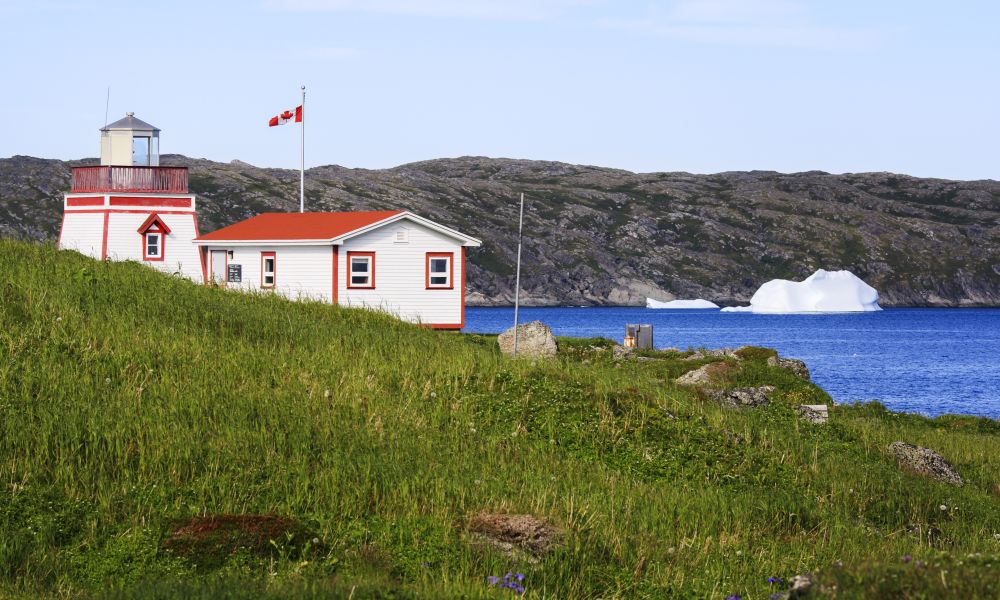
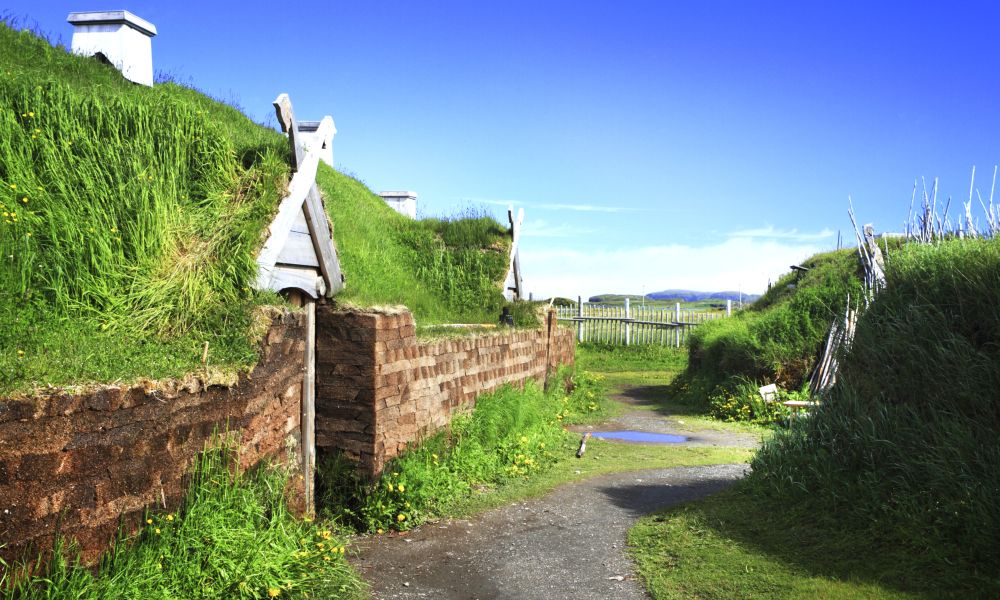
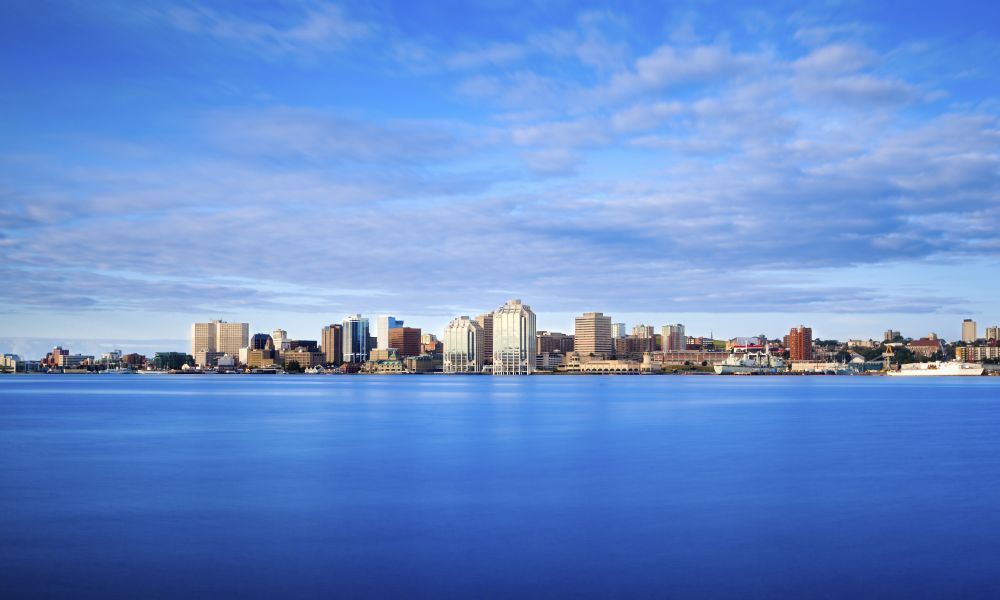
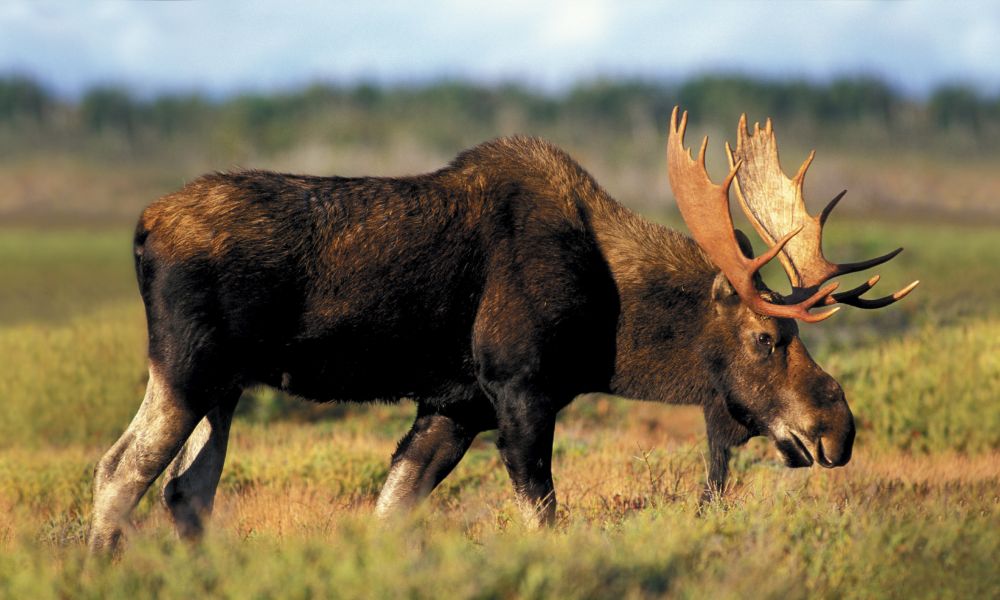

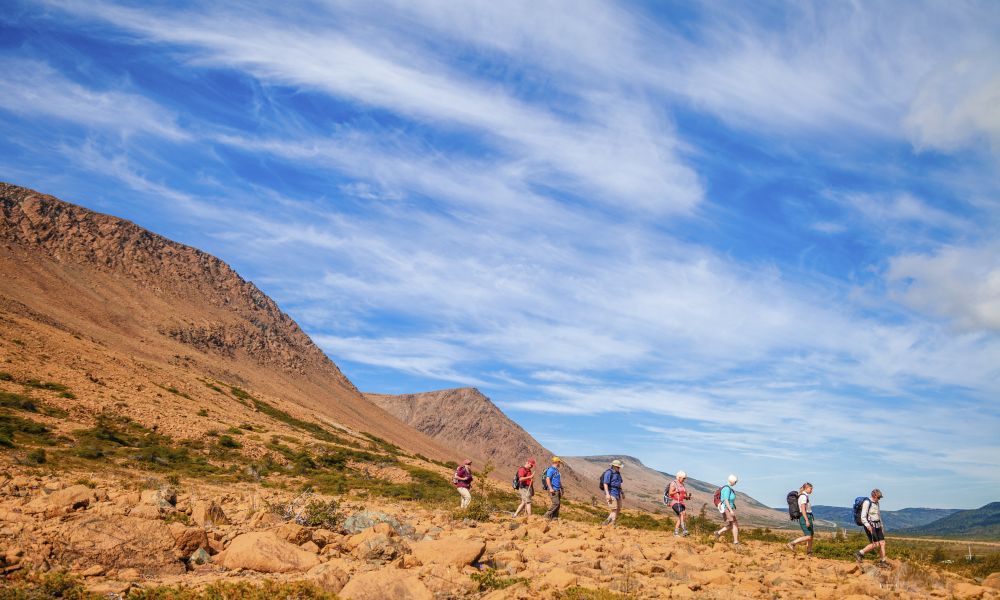

Day 1
Nuuk, Greenland - Embarkation
On the first day of your voyage, board your flights and arrive in Nuuk, Greenland's small but perfectly formed capital city! A mixture of skyscrapers and traditional wooden houses, the quaint and the cosmopolitan, Nuuk is a city of contrasts. The vibrant bustling capital of Greenland, Nuuk feels much larger than it’s 19,000 inhabitants, and offers a wealth of experiences to visitors.
Upon arrival in Nuuk Airport, we will be driven past the city center of Nuuk to the city harbour, where Ocean Albatros awaits. Embark your expedition vessel, settle into your comfortable stateroom and prepare for adventure! After the mandatory safety briefing and drill, dine in comfort with your fellow explorers as we set sail along the coast of Greenland.
Day 2
Kangaamiut and Eighedsfjorden, Greenland
On the next day of our expedition, we will arrive at the small village of Kangaamiut, an incredibly picturesque settlement in Greenland’s central Qeqqata region. Surrounded by cold rich waters and a vast back country brimming with game, life in Kangaamiut moves at a slower pace, and locals still live a largely traditional lifestyle, surviving by hunting and fishing. Hike to the heliport atop the hill for stunning views over the town and the surrounding fjordlands, or meet the friendly local people during a display of traditional clothing, foods, and seal-flensing. The artists of Kangaamiut are well-known throughout Greenland, and some of the locals' most splendid work can be viewed in the town's small museum.
In the afternoon, we will sail inland into Evighedsfjorden/Kangerlussuatsiaq, one of the many deep fjords carved between the steep mountains of this region. The Danish name 'Evighedsfjorden' means 'The Eternity Fjord', referring to the vast size of the inlet, while the Greenlandic name 'Kangerlussuatsiaq' translates as 'The Rather Large Fjord' - something of an understatement! Evighedsfjorden stretches around 100km into the glacier-clad mountains, bisecting the large ice cap which overlies much of the land between Nuuk and Sisimiut - Greenland's two largest cities. We will aim to explore on a Zodiac cruise in front of the Evigheds Glacier, which flows into the fjord from the Maniitsoq Ice Cap above. Watch for calvings from the glacier, and guillemots and kittiwakes on the nearby bird cliffs.
Day 3
At sea, crossing the Davis Strait
Separating southwestern Greenland from eastern Nunavut, the Davis Strait was named for John Davis, one of the many European explorers who ventureed into this region in search of the Northwest Passage. The area was formerly a hotspot for European whalers, who came to harvest the vast numbers of northern right whales which once frequented the area. The coasts of the Davis Strait are sparsely inhabited, with Nuuk and Iqaluit being by far the largest. Extreme tidal ranges and heavy winter ice once made access to the region a serious challenge, although modern expedition vessels such as the Ocean Albatros can now navigate such waters with ease.
Days at sea are never dull. We will arrange a variety of activities onboard for our guests to enjoy to engage the mind, body and soul. Join your knowledgeable Expedition Team lecturers in the Theatre to hear specially-crafted lectures on local history, wildlife, geology, culture and more, unwind with a massage in the Albatros Polar Spa, or simply watch the seabirds gliding along the ship from our hot tubs as the Ocean Albatros flies across the Davis Strait.
Day 4
Pangnirtung, Nunavut, Canada
Situated in the calm waters of the vast Kuugarjuaq fjord off Cumberland Sound, Pangnirtung surely occupies one of the most scenic locations in the Arctic. A small town nestled amid sweeping glacier-capped mountains and miles of pristine tundra, Pangnirtung represents what most people think of when considering Inuit hamlets in Canada. Even the place names here drip with description; Kuugarjuaq roughly means 'Becoming a Large River', while Pangniqtuuq (ᐸᖕᓂᖅᑑᖅ), the Inuktitut name of the town means 'The Place of Bull Caribou' - although the town is often known throughout Canada simply as 'Pang'.
The local Inuit in the region have only had contact with Europeans in the last 100 years; the settlement was established as a Hudson’s Bay Company trading post, around which the modern town grew as government services were established in the area. Today home to around 1,500 people. The town is today known both for its outstanding natural beauty which have earned it the epithet 'the Switzerland of the Arctic', and the enterprise of the local residents. Government initiatives have promoted the growth of Inuit Art in Pangnirtung, and artworks from the town such as carvings, prints and woven goods are sought after worldwide - expecially the famous Pang Hat, the closely knitted iconic headware of Nunavut.
Day 5
Monumental Island and Lady Franklin Island, Nunavut, Canada
Two barren and isolated rocks pierce the sea off the southeast coast of Baffin Island – these are Monumental and Lady Franklin Islands, two of the most wildlife-rich areas in Nunavut.
Monumental Island was named in English in honour of the ill-fated Franklin Expedition - however the Inuktitut name ᐅᒥᐊᙳᐊᖅ/Umiannguaq references the island's shape, translating as 'The Little Boat'. Lady Franklin Island was named in honour of Franklin's wife, who sponsored seven expeditions in search of her missing husband - a sadly fruitless endeavour.
Situated well offshore, well away from the nearest human settlements and icebound for most of the year, these undistrubed islands are a haven for polar bears and walrus, which are commonly seen in the area along with the vast flocks of seabirds which nest on these remote islands. Although wildlife sightings are never guaranteed, these are two of the best sites in Nunavut to see Arctic wildlife; keep binoculars and cameras at the ready!
Day 6
Lower Savage Islands, Nunavut, Canada
The Lower Savage Islands are a group of rugged low-lying islands at the mouth of Frobisher Bay, the vast inlet leading to Iqaluit. Eons of time, and the passage of ice, wind and sea have carved two deep channels into these islands, which almost seem made for exploring by Zodiac. While the landscape is barren and stark, the southern Baffin region experiences some of the largest tidal variations on Earth, and these strong currents keep the waters in and around the islands fresh and rich in nutrients. Thus, these waters are a hotspot for Arctic wildlife, which we hope to see during a day spent Zodiac cruising in the area.
Day 7
Kangiqsujuaq, Nunavik, Quebec, Canada
Translating from Inuktitut as 'The Big Bay', Kangiqsujuaq sits in a calm and sheltered fjord off Ungava Bay. It is one of the larger towns in Nunavik, the Inuit homeland in the Canadian province of Quebec, which covers the northern third of the province. The natural setting of Kangiqsujuaq could not be more perfect, and the town sits in a verdant valley nestled between mountains, and backed by a lake which provides pure drinking water to the town.
While culturally similar to towns in Nunavut, Kangiqsujuaq is part of Quebec, and the local language and culture are subtly different to those in Nunavut. Slighty warmer and greener than Baffin Island, locals in Kangiqsujuaq are known for their unique method of shellfish harvesting, where locals will venture under the ice during low winter tides, harvesting mussels in the temporary ice caves before the sea returns.
Outside Kangiqsujuaq lies one of Canada's most productive copper and nickel mines; while mining continues to be controversial in Canada's Inuit lands, residents of Kangiqsujuaq has prospered from their mineral wealth. Locals are proud of their Inuit culture, and stunning murals and artworks adorn alost every building.
Day 8
Akpatok Island, Quebec, Canada
In the center of Ungava Bay lies Akpatok Island. Barren, remote, and surrounded by sea ice for most of the year, Akpatok is only accessible for a few months in the height of summer. Akpatok Island is one of the most geologically unique in Nunavut. Unlike Baffin Island and the narby Canadian mainland, which are composed of ancient metamorphic rock, Akpatok is composed of much younger sediments, the layers of which have been eroded by millenia of wind, water and ice. This has produced the island's stunning cliffs, composed of layers of white limestone and indented by gullies and valleys dripping with greenery, resembling a long-lost ancient temple or fortress.
'Akpat' is the Inuktitut word for 'Guillemots', which hints at the island's main residents. Thousands upon thousands of Brunnich's Guillemots flock to this island in summer, clustering on narrow rock ledges to lay their eggs and raise their chicks. Once fledged, the chicks jump from the rocky ledges into the water, ready to start their lives at sea. However, mindful of the potential bounty, arctic foxes and sometimes even polar bears frequent the island, roaming the shores and plains of the island in a never-ending hunt for prey.
The best way to explore this magnificent island is by sea, and (conditions permitting) we will offer a thrilling adventure with our skilled expedition staff to explore the magnificent scenery and wildlife of this remote island.
Day 9
Torngat National Park, Labrador, Canada
At the northernmost tip of Labrador lie the Torngat Mountains, the highest peaks in Canada east of the Rockies. This vast wilderness is shared between the provinces of Quebec and Newfoundland and Labrador, with the border running along the highest peaks of the range. In the Inuktitut language, tongait roughly translates as 'place of spirits' - the otherworldly landscapes of these mountains make it easy to understand why. The Norse also visited this area around 1000 years ago, naming the area 'Markland' - the Land of Forests, and probably came here to gather wood (a rarity in their strongholds of Iceland and South Greenland).
Protected as a National Park, the vast majority of the Torngats are inaccessible to all but Inuit hunters from Nunatsiavut - the Inuit homelands in Labrador. Fewer than 600 people visit the park each year, which is well known for it's large and dangerous populations of polar bears and black bears - therefore, the safest way to explore this vast wilderness is from the expedition vessel itself. As autumn returns to the North, join your Expedition Team on deck as we explore the fjords and mountainscapes of this stunning wilderness - keep your binoculars at the ready!
Day 10
At sea, en route to Labrador
Following the coast of Labrador, we sail in the wake of 10th Century Norse explorers, the first Europeans to visit this vast land (known as Markland in the Norse Sagas). As did the Viking explorers of old, watch the golden sunrise from your private balcony, or enjoy with friends in the Observation Lounge on Deck 8. Through the day, feed your curiosity with our Expedition Team, who will share specially-crafted lectures and hands-on workshops with our guests. Be sure to join the Expedition Team on the outer decks of Ocean Albatros as well, and feel the temperature rise as we leave the Arctic behind and enter the Canadian Maritimes. As we sail south, ensure you are on the outer decks during the evenings, where we hope to see the breathtaking northern lights - the aurora borealis.
Day 11
Rigolet, Labrador, Canada
The small town of Rigolet sits at the entrance of Hamilton Inlet, in the heart of Labrador. The local name of the town is Tikigaaksuagusik ('Land Resembling an Index Finger'); around 95% of the town's population are Inuit, and Rigolet is the southernmost Inuit community on Earth - further south than much warmer cities such as Copenhagen, Oslo and Helsinki.
Inuit arrived here around the year 1600, arriving in a land where trees grow, rather than tundra. At this time, Europeans were beginning to exploit the region, largely hunting for whales and seals. The long arm of the Hudson's Bay Company arrived in Tikigaaksuagusik in 1836, where European settlers arrived in the pre-established Inuit community. At the junction between Inuit lands to the North and the more temperate Canadian South, Rigolet prospered on the export of fish, furs and other natural goods.
Despite a small population of just over three hundred, Rigolet is well-known throughout Canada. The artists of the town excel in traditional crafts such as stone-carving, sealskin fashion and basketry. The boardwalk built to connect the trading post buildings to the town has been lengthened and enlarged over the years, and today is one of the best ways to explore the breathtaking nature around the town. Humpback whales, vast schools of salmon and soemtimes eagles can be seen from this weatherproof path - the longest boardwalk in North America.
Day 12
St Anthony, Newfoundland, Canada
St Anthony is perched at the northernmost tip of the island of Newfoundland, on rolling hills unchanged since the days when the Vikings arrived on these shores. Newfoundland is believed to be the land referred to in the Norse Sagas as 'Vinland', a land of timber, rich fishing and safe anchorages. Vinland was believed to be a legend for hundreds of years, until archaeologists discovered the remains of Norse buildings at the northernmost tip of Newfoundland at L'Anse aux Meadows - exactly where the sagas stated.
This sensational archaeological discovery rewrote world history. It pushed European arrival in the Americas back by 500 years, and confirmed the claims made in the Sagas. Evidence suggests that while the Norse never fully settled in the area, they sailed much further south to the St Lawrence River, probably in search of timber and other supplies. The site was abandonded by the 1100s, but the outlines of buidlings can still be seen over 1000 years later.
Today, L'Anse aux Meadows is a UNESCO World Heritage Site and a Canadian National Historic Site, and remains the first and only Norse site in the Americas outside Greenland. The Sagas state that Leif Erikson himself founded the site, although the truth of this is lost to time. We will arrive in the chamring town of St Anthony, from where we will offer an optional excursion (charge applies) to L'Anse aux Meadows, following in the footsteps of Norse explorers a thousand years ago - the original Nordic-American experience!
Day 13
Woody Point, Newfoundland, Canada
Nestled in the sheltered fjords of western Newfoundland lies the sleepy town of Woody Point, a slice of quintessential Newfoundland. With fewer than 300 inhabitants, life in Woody Point moves at a slower pace, surrounded by majestic trees and imposing mountains. Woody Point is the gateway to the incredible Gros Morne National Park, a wonderland of fjords, lakes, mountains and waterfalls, just a stone's throw from town.
And the stones here tell a fascinating story! As you ascend into the mountains, patches of forest give way to a bald, rocky Martian landscape - these are the famous Tablelands, a geological marvel which can be observed almost nowhere else on Earth. Millions of years ago as the predecessor to the Atlantic Ocean closed and Europe and North America collided, a slab of rock from the ancient ocean floor became trapped in these mountains, and has remained here ever since. Poor in nutrients, this rock provides poor soil, leading to the stark difference in vegetation here - a thumb-sized branch on the tablelands can be hundreds of years old! This lack of nutrients prompted evolution to think again, and entire communities of insect-eating carnivorous plants can be seen along the paths through the area. The area is a magnet for geologists, who can observe processes of Erth history which are otherwise inaccessible. The nearby Gros Morne National Park Center tells visitors of this fascinating geological and ecological history, as well as the fascinating story of the Indigenous Mi'kmaq people.
Day 14
At sea, en route to Halifax
During our last relaxing day at sea, a variety of activities will be arranged on board to provide our guests with the chance to reflect on their voyage. Relax with an expertly crafted cocktail in the Nordic Bar in the company of new friends, soak up the knowledge and passion of our Expedition Team during lectures in the Lounge, or simply enjoy the flight of the fulmars which accompany us southwards.
During your last evening onboard, join the Captain and Officers of the Ocean Albatros for the Farewell Cocktail Party, followed by a presentation of photos and video by our onboard photographer - the ideal opportunity to re-live your Arctic adventure. Skål!
Day 15
Halifax, Nova Scotia, Canada
During the final morning of our expedition, Ocean Albatros will arrive in the sheltered harbour of Halifax, the capital and largest city of the Canadian province of Nova Scotia. Bustling city streets and glittering buildings may seem strange after the serene wilderness of the Arctic! Halifax is the ideal gateway from which to explore Nova Scotia, or indeed to venture further into Canada, with direct flight connections around North America, as well as Europe.
After a hearty breakfast, it is time to bid a fond farewell to the Crew and Albatros Expedition Team, and descend the gangway back to dry land with memories of the voyage of a lifetime.
Inclusions
- 15-day/14-night cruiseonboard Ocean Albatros in a shared double stateroom with private bathroom in the chosen category
- English-speaking expedition team
- Nature hikes and Zodiac cruises per itinerary
- In-port town and settlement walks with the Expedition Team
- Information briefings and lectures by Expedition Team
- Full board onboard Ocean Albatros, including house beverages at dinner
- Free coffee, tea and afternoon snacks onboard
- Welcome and farewell cocktails
- Taxes, tariffs and AECO fees
- Digital visual journal link after the voyage, including voyage log, gallery, species list and more!
Exclusions
- Hotel accommodations pre- and post-cruise
- International flights
- Travel insurance
- Cancellation insurance
- Extra/optional excursions and activities in selected ports
- Single room supplement
- Meals not on board the ship
- Beverages (other than coffee and tea)
- Tips for the crew (we recommend USD 16 per person per day)
- Personal expenses
- Anything not mentioned under 'Inclusions'.
After leaving the city of Nuuk, your expedition vessel will proceed onwards into Greenland and Canada to explore the unknown. The goal for the days spent exploring is to offer activities which will allow everyone to explore off the ship as much as possible, and experience the nature, settlements and culture of the Arctic in person.
Our activities in Greenland and Canada will vary widely according to the nature of the locations we visit – some larger settlements need an entire day to explore, whereas some smaller villages can be seen in a few hours. Greenland and Canada are vast, and on any itinerary in this region travel time between destinations can be significant. Activities we offer include landings, Zodiac cruises and ship cruises. Regulations in the Arctic limit the number of people ashore at any time at certain natural and historical sites, so we will usually aim to offer a Zodiac cruise while our first group of guests are ashore, and reverse this for the second group ashore to maximise exploration time where numerical limits apply. In towns and cities where the environment is less sensitive, there are no limits on numbers of people ashore. No matter the day’s planned activities, the onboard Expedition Team and Expedition Leader will work as hard as possible in conjunction with the Captain and Crew to maximize exploration opportunities.
A “typical” expedition day may look like this (subject to weather and sea conditions and sailing schedule):
- 06:45: Wake-up call
- 07:00-08:00: Breakfast
- 08:30-11:30: Morning activity – arrival in port at anchor, Zodiac ashore to explore settlements, natural sites etc. Depending on the location, we may spend the whole day in port.
- 12:30-13:30: Lunch onboard
- 14:30-17:30: Afternoon Activity – Either in connection with the morning, or at a different site, depending on itinerary
- 18:30-19:30: Evening Recap with Expedition Team
- 19:30: Dinner
Landings are a great opportunity to stretch your legs and set foot on shore to visit the towns and cities of Greenland and Canada and experience Arctic nature first-hand. Our experienced Expedition Team will be on shore to help you spot any wildlife, identify the different species of birds and mammals, guide you through settlements, as well as keep our guests safe on shore from any potential hazards.
We remind our guests that Greenland and Northern Canada are truly wild destinations, and to consider their physical capability when travelling here. In smaller towns and villages, infrastructure for tourism may be less well developed than in other destinations. Most smaller towns and villages lack step-free access, and roads and paths can often be steep and uneven. Wilderness sites lack any kind of access infrastructure.
Some sites do not offer landing opportunities, but are locations where exploring on the water offers the best opportunities for sightseeing, wildlife and photography. These Zodiac cruise sites are often known for their concentration of ice, wildlife and even historical landmarks such as Inuit ruins, where our fleet of Zodiacs offer the best vantage point. This would be the only scenario you may have to wait on the ship (other than in adverse weather conditions), but we will always aim to offer an onboard program during this time, such as seminars given by our knowledgeable and experienced Lecturer team. Zodiac cruises are great for observing icebergs, glaciers, whales, and other marine wildlife. Your skilled driver will navigate around the area looking for wildlife and beautiful landscapes. By the end of the voyage, Zodiac cruises tend to become a firm favourite among our guests because of the vast diversity of scenery and marine life it is possible to experience.
In the event we encounter bad weather or are in a particularly spectacular location, often our purpose-built expedition vessels are the best viewing platform. The Captain and Expedition Leader will search for locations best accessed with the vessel to seek out the best wildlife and scenery. We encourage everyone to bundle up and either head onto the outer decks with the Expedition Team or relax in superlative comfort in our specially-designed lounges to experience the majesty of the Arctic from the best vantage point. During this time, our Expedition Team specialists will offer skillfully-crafted lectures related to the wildlife, history, culture and conservation of the region, and more!
Other activities onboard include our ship Gym, where you can work up a sweat on our fitness bicycles or treadmills; most of our ships even have other cardio machines and strength/lifting options. Most voyages throughout the season also offer kayaking (booked and paid onboard – weather permitting), and we will often aim to offer hiking excursions onshore when possible. Our new purpose-built ships have a Spa, in which guests can enjoy massages, facials, and other relaxing treatments (additional cost applies). Our Library is a great place to rest between outings, with expansive views and a wide selection of Arctic-related reading material. During your voyage you will also be able to enjoy our tea time in the late afternoon, or indulge in some retail therapy in our onboard shop, which sells personal necessities as well as specially-selected Arctic souvenirs.
In between our landings and activities we offer three hearty daily main meals. Albatros Expeditions always have allergy flexible options, healthy selections as well as a variety of vegetarian and vegan options.
Our hardworking galley crew deliver multiple Breakfast options, served in a buffet style along with a cooking station where eggs are made to order. At Lunch we are also met with a smorgasbord of mouthwatering choices. Safe to say you will have the energy for your next outing!
When it is Dinner time, you can choose to eat at the main restaurant or book a table at the Specialty Restaurant. Your evening meal is served a la carte, with fresh new options daily and always a selection of fixed items. There is always a vegetarian and pescetarian option available. Albatros Expeditions are known for our delicious menus and a variety of exquisite wine pairings.
Onboard you will also have the option to join Afternoon Tea with sweets, cakes or snacks served each afternoon. Albatros Expeditions have tea and coffee freely available all day throughout the vessel, while specialty coffee, alcoholic beverages and hand-crafted cocktails are available at the ship’s bars.
Spring comes late to Greenland and northern Canada, due to their challenging polar climate. During June, migratory wildlife begins to return to the North. Geese, wading birds, and seabirds arrive for their breeding season, constructing nests and defending their tiny but all-important territories. While this region experiences near-midnight sun from May to August, during June, many of the fjords are still frozen, and snow reaches down to the sea. This cold and unpredictable weather can hamper exploration at times.
By July, the North begins to come to life. The tundra begins to come to life, as saxifrages, Arctic willows and heathers start to green the otherwise stark Arctic landscape. Flowers bloom in the brief Arctic summer, rotating through the day to follow the precious sunlight. In wilderness areas, muskox and reindeer can be seen grazing on the fresh greenery, while inhabited locations burst to life. Locals in the Arctic take advantage of the brief summer to harvest the ocean’s riches, and summer is prime fishing season. Conditions during July tend to be settled, with calm sunny days the norm (although beware of the mosquitos in windless areas)! Expect to meet plenty of locals – July is the middle of the summer holiday, so expect to see children enjoying their freedom on their bikes and skateboards. Many locals pivot to working in tourism during the brief summer season; even small towns can be bustling when a vessel visits!
August is the peak of the Arctic summer, with long sunny days – although the evenings start to draw in with several hours of darkness by the end of the month. August is prime hunting season in Greenland and Northern Canada – depending on the day, some settlements can be almost empty, with almost all locals heading into the wilderness to hunt reindeer, seals and muskox. Expect to see the fruits of these hunts for sale in local markets, usually proudly sold by local hunters. August is also peak trout season, so expect to see fish hung up to dry around towns and villages, or being smoked in small turf ovens. Most chicks have begun to fledge by this point, and are starting to leave the nest; for cliff-nesting species, this involves a terrifying leap off their nest into the sea – often known as ‘jumping season’. On land, the tundra plants are moving rapidly through their life cycle, and tart crowberries and delicious blueberries are almost everywhere – expect to see locals young and old alike gathering this delectable bounty; some is eaten as-is or used in baking, and the rest frozen to enjoy during the long winter.
The tundra is at its brightest during September, as the willows, then the saxifrages and heathers begin to show their colours; an autumn forest in miniature! During September, the weather in the North Atlantic can become more challenging and wild, giving an even more rugged cast to this spectacular region. September marks the return of true dark nights as autumn sets in. Frosts and even snow showers can occur this time of year, although the longer nights also offer a tantalising chance to see the Northern Lights. This time of year, most migratory birds are starting to head south or out to the open ocean for the winter, so expect to see a variety of birds of all ages heading to sea for winter.
Arctic North America is vast, stretching thousands of kilometers from north to south. The climate throughout these regions is subsequently hugely varied, reflecting the variation in latitude.
Greenland’s west coast (including the Disko Bay region) tend to have a cooler but more stable climate than the south of the country. Expect temperatures between 8-12°C (46-54°F). These temperatures can be exceeded in sheltered areas, especially far up fjords. The weather is generally calm and sunny, although cool rainy or foggy days do occur. It is very rare for snowfall or sub-zero temperatures to occur in summer, although this does occasionally happen.
Nunavut does not benefit from the same warm ocean currents as Greenland, and even southern Baffin Island is cooler and much more stark than similar latitudes in Greenland. While summer days are still long and bright, expect temperatures to be slightly colder on the western side of the Davis Strait.
As we sail further south into the Canadian maritimes, the climare befomes warmer and more humid, as trees gradually replace tundra. However, cool winds mean that even in summer, extra layers are needed.
We therefore remind our guests to be prepared for all weather conditions! We highly recommend to our guests to dress in layers (ideally in woolen or synthetic fibers) and a backpack so that layers can be adjusted as the weather dictates. Warm/waterproof layers, hats, waterproof gloves and scarves are recommended for all excursions off the vessel, even on the sunniest days – the weather can deteriorate rapidly at any time. Sun protection (hats, sunglasses, sunscreen and lip balm) is also essential – the low angle of the Arctic sun combined with cool ambient temperatures can cause sunburn to easily go unnoticed until it is too late!
Despite it's high latitude and cold weather, mosquitos and other insects can cause a real nuisance in this region during summer. Head nets, long sleeved clothing and repellant are essential for a comfortable experience, and we highly advise guests joining this voyage to ensure they prepare for encounters with these tiny irritating Arctic animals!




